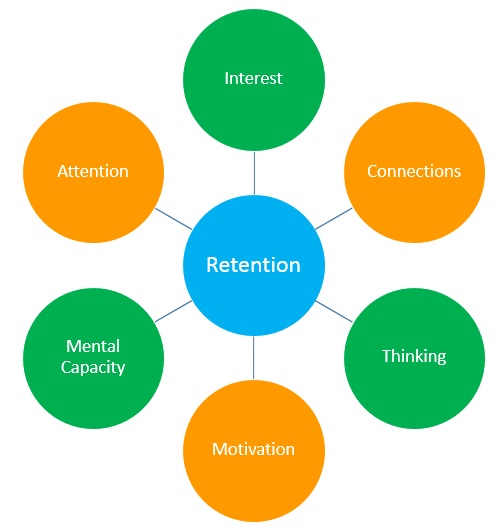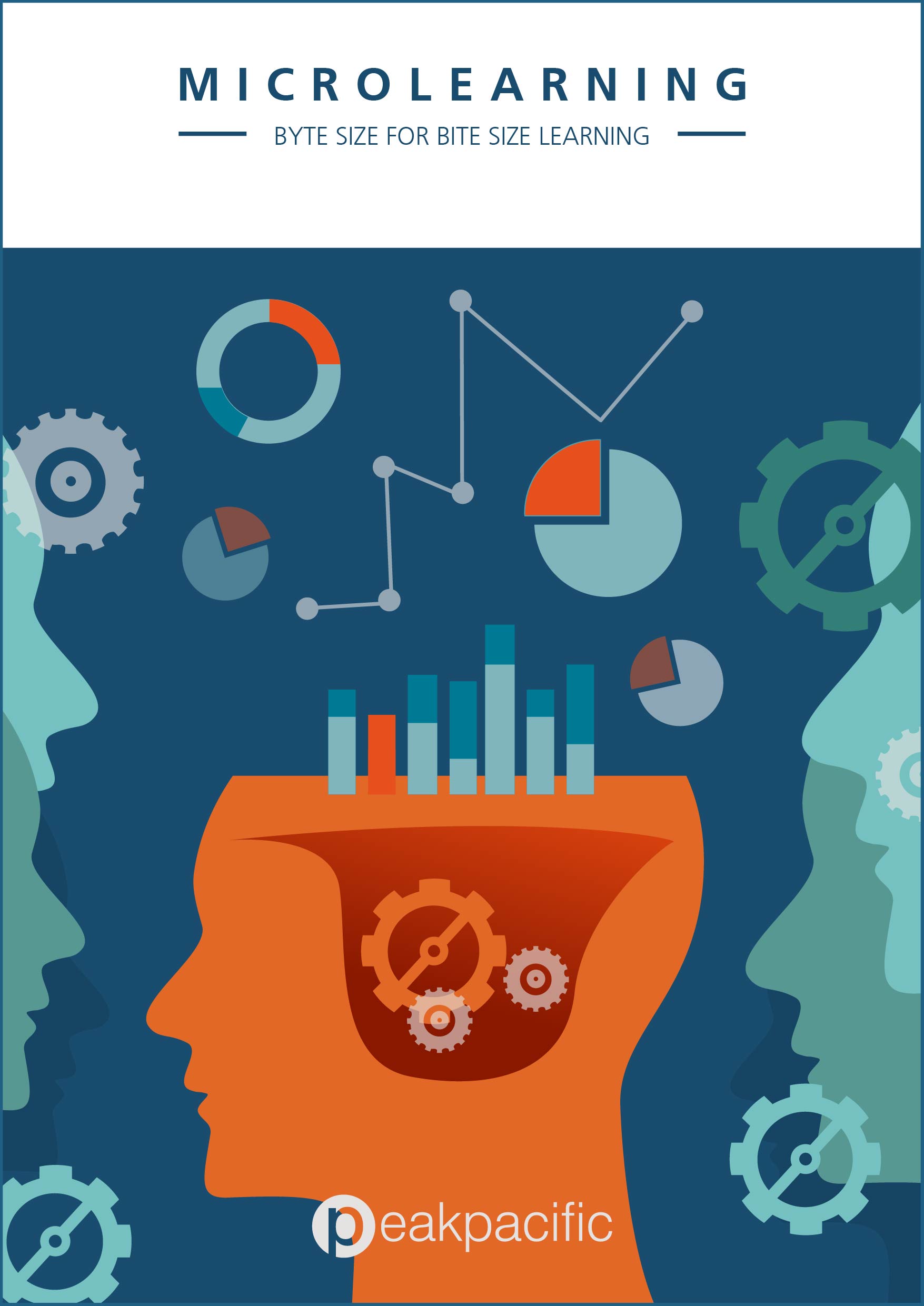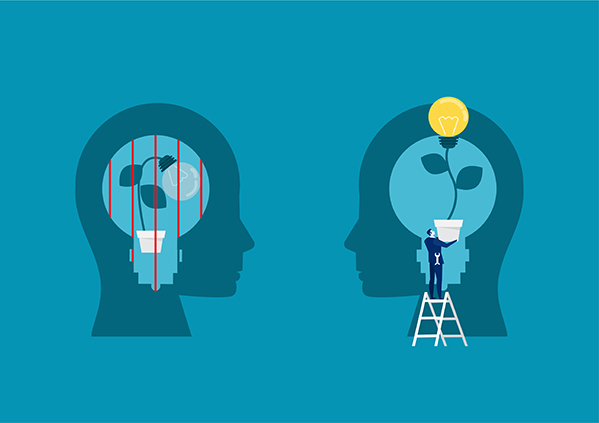Introduction: The Power of Effective Learning
In today’s rapidly changing world, the ability to learn more in less time is a valuable skill. Efficient learning enables individuals to stay updated on new trends, acquire new skills, and maintain a competitive edge in their personal and professional lives. By maximizing learning potential and minimizing time investment, one can achieve a desirable balance between productivity and personal growth.

Understanding Your Learning Style: Identifying the Most Effective Approach
Efficient learning begins with understanding one’s learning style, which refers to the way an individual absorbs, processes, and retains information most effectively. The four primary learning styles are visual, auditory, reading/writing, and kinesthetic. Recognizing your learning style can help you tailor your study methods to maximize comprehension and retention.
Visual Learners
Visual learners prefer using images, maps, and graphic organizers to understand new concepts. They benefit from visual aids such as diagrams, charts, and videos. To enhance learning, visual learners can use color-coding, mind maps, and infographics to organize information.
Auditory Learners
Auditory learners absorb information best through listening and verbal communication. They can benefit from lectures, discussions, and podcasts. To reinforce learning, auditory learners can record themselves summarizing key concepts and replay the recordings for review.
Reading/Writing Learners
Reading/writing learners excel in text-based learning and written communication. They can improve their learning by taking detailed notes, summarizing texts, and creating outlines. Engaging in activities such as writing essays, book reports, and journaling can further solidify their understanding of the material.
Kinesthetic Learners
Kinesthetic learners learn best through hands-on experiences and physical activities. They can benefit from role-playing, simulations, and experiments. To facilitate learning, kinesthetic learners can incorporate movement into their study routines, such as pacing while memorizing or using flashcards.
To identify your learning style, consider the following:
- Reflect on past learning experiences and consider which methods have been most effective.
- Take a learning style quiz or questionnaire to receive a formal assessment.
- Experiment with different learning methods and evaluate their impact on your comprehension and retention.
By adapting your learning strategies to your unique learning style, you can optimize your study time and enhance your overall learning experience.
Setting Clear Objectives: The Foundation of Efficient Learning
To learn more in less time, it is crucial to establish clear objectives in the learning process. Setting Specific, Measurable, Achievable, Relevant, and Time-bound (SMART) goals helps maintain focus, motivation, and a sense of direction. By breaking down larger learning objectives into smaller, manageable tasks, learners can efficiently allocate their time and resources.
Specific
Goals should be clear and unambiguous, leaving no room for confusion or misinterpretation. Instead of setting a vague goal like “I want to learn Spanish,” a specific goal would be “I want to learn and practice Spanish grammar rules and vocabulary to achieve a B1 level of proficiency within six months.”
Measurable
Measurable goals allow learners to track their progress and stay motivated. Incorporating quantifiable elements, such as completion of specific modules or achieving a certain score on assessments, helps learners gauge their improvement and adjust their strategies accordingly.
Achievable
Goals should be challenging yet attainable. Setting unrealistic expectations can lead to frustration and burnout. By establishing achievable goals, learners can build confidence and maintain momentum throughout their learning journey.
Relevant
Ensure that goals align with personal interests, career objectives, or broader life goals. Relevant goals provide a strong foundation for motivation and long-term commitment. For instance, if you aspire to work in a multinational company, setting a goal to learn a foreign language would be highly relevant.
Time-bound
Assigning a realistic timeframe to goals creates a sense of urgency and accountability. Deadlines help learners prioritize tasks, allocate time effectively, and maintain focus on their objectives. Breaking larger goals into smaller milestones can help learners monitor progress and celebrate achievements along the way.
By incorporating SMART goals into the learning process, learners can create a solid foundation for efficient learning and maximize their potential to learn more in less time.
Optimizing Your Study Environment: Enhancing Learning Efficiency
Creating an optimal study environment is crucial for learning more efficiently and retaining information effectively. Various factors, such as location, distractions, and technology, can significantly impact the learning process. By making conscious decisions about these elements, learners can enhance their study environment and maximize their learning potential.
Location
Selecting a suitable location for studying is essential for maintaining focus and productivity. Ideally, the study space should be quiet, well-lit, and comfortable. Learners can choose from various options, such as a dedicated home office, a local library, or a quiet café. Changing the study location from time to time can also help maintain motivation and prevent boredom.
Minimizing Distractions
Distractions, such as social media, phone notifications, or background noise, can hinder the learning process and reduce learning efficiency. To minimize distractions, learners should turn off notifications, use apps that block distracting websites, or employ the Pomodoro Technique, which involves studying for short, focused intervals with regular breaks. Additionally, learners can use noise-canceling headphones or ambient noise apps to create a conducive study atmosphere.
Utilizing Technology Effectively
Technology can be a valuable tool for enhancing the learning experience. For instance, learners can use digital flashcards, educational apps, or online resources to supplement their studies. However, it is essential to use technology judiciously and avoid overreliance on digital devices, as excessive screen time can lead to decreased focus and productivity. Implementing the “20-20-20” rule, which involves taking a 20-second break to look at something 20 feet away every 20 minutes, can help alleviate eye strain and maintain focus.
By optimizing their study environment, learners can significantly improve their learning efficiency and better retain the information they acquire. A conducive study space, minimal distractions, and effective use of technology can help learners achieve their goals of learning more in less time.

Implementing Active Learning Techniques: Engaging the Mind for Maximum Retention
Active learning techniques are powerful strategies that enable learners to engage with the material, promoting better understanding and long-term retention. These methods focus on actively participating in the learning process, as opposed to passive learning, which primarily involves absorbing information without much interaction. By incorporating active learning techniques into their study routines, learners can significantly enhance their ability to learn more in less time.
Spaced Repetition
Spaced repetition is a learning technique that involves reviewing information at gradually increasing intervals. This approach helps to consolidate memories and improve long-term retention. By spacing out study sessions, learners can take advantage of the “spacing effect,” which suggests that our brains are more likely to retain information when it is studied over a longer period with breaks in between. To implement spaced repetition, learners can use digital flashcards, apps, or physical flashcards to review material systematically.
Elaborative Interrogation
Elaborative interrogation is a learning strategy that involves generating explanations for why an explicitly stated fact or concept is true. By asking “why” questions and providing detailed answers, learners can deepen their understanding of the material and strengthen their memory of it. This technique encourages learners to think critically about the information they are studying, fostering a more meaningful connection with the material and promoting better recall.
Self-Explanation
Self-explanation is a learning method that requires learners to explain, in their own words, the concepts they are studying. By articulating their understanding of the material, learners can identify gaps in their knowledge and clarify any misconceptions. Self-explanation can be particularly effective when learners explain new concepts in relation to previously learned material, helping to build a cohesive understanding of the subject matter. This technique can be applied when studying textbooks, watching educational videos, or participating in online courses.
By incorporating active learning techniques such as spaced repetition, elaborative interrogation, and self-explanation, learners can significantly improve their ability to learn more in less time. These methods foster a deeper understanding of the material, promote long-term retention, and encourage critical thinking, making them invaluable tools for efficient learning.

Breaking Down Information Overload: Strategic Learning in Bite-Sized Chunks
In today’s digital age, information overload is a common challenge faced by learners striving to enhance their knowledge and skills. With an overwhelming amount of data and resources available at our fingertips, it can be difficult to effectively process and retain information. This issue is particularly relevant for those seeking to learn more in less time, as the traditional methods of learning may not be as efficient in managing the vast quantities of information. To address this challenge, learners must employ strategies that break down complex topics into manageable pieces, promoting better comprehension and recall.
Understanding Information Overload
Information overload occurs when the amount of available information exceeds an individual’s processing capacity, leading to stress, confusion, and poor decision-making. In the context of learning, information overload can hinder the learning process, making it difficult for learners to absorb, understand, and retain new concepts. To mitigate the negative effects of information overload, learners must adopt strategic learning techniques that enable them to effectively manage and process the information they encounter.
Strategies for Managing Information Overload
- Chunking: Breaking down complex information into smaller, manageable pieces, known as chunks, can help learners process and retain information more effectively. By focusing on one concept or idea at a time, learners can reduce cognitive load and build a stronger understanding of the material.
- Prioritization: Identifying the most important information and focusing on that first can help learners manage their time and energy more effectively. By prioritizing key concepts and ideas, learners can ensure that they are allocating their resources to the most valuable aspects of their learning journey.
- Summarization: Creating summaries of the material can help learners consolidate their understanding and identify any gaps in their knowledge. By summarizing the information in their own words, learners can ensure that they have a solid grasp of the key concepts and ideas, making it easier to recall the information when needed.
By incorporating these strategies into their learning process, learners can effectively manage information overload and improve their ability to learn more in less time. Chunking, prioritization, and summarization are powerful tools that enable learners to break down complex topics into manageable pieces, promoting better comprehension and recall.

Monitoring Progress and Adjusting Strategies: The Key to Continuous Improvement
In the pursuit of learning more in less time, it is essential to regularly assess progress and make adjustments to one’s learning strategies. Monitoring progress not only helps learners identify areas of strength and weakness but also provides valuable feedback that can inform future learning efforts. By tracking progress and making data-driven decisions about their learning approach, learners can optimize their time and resources, ensuring that they are making the most of their learning potential.
The Importance of Regular Self-Assessment
Regular self-assessment is a critical component of efficient learning. By periodically evaluating their understanding and retention of the material, learners can identify any gaps in their knowledge and address them promptly. Self-assessment can take many forms, including quizzes, practice tests, and self-reflection exercises. By incorporating these activities into their learning process, learners can gain a clearer understanding of their progress and make informed decisions about how to adjust their strategies moving forward.
Tracking Progress and Adjusting Strategies
In addition to regular self-assessment, learners should also track their progress over time. This can be done through the use of learning management systems, spreadsheets, or other tools that enable learners to monitor their performance and identify trends. By analyzing this data, learners can identify areas where they are making progress and areas where they may need to make adjustments to their learning strategies. For example, if a learner finds that they are struggling to retain information over time, they may need to incorporate spaced repetition or other active learning techniques into their approach.
The Role of Feedback in Continuous Improvement
Feedback is another critical component of efficient learning. By seeking feedback from teachers, peers, or other experts, learners can gain valuable insights into their strengths and weaknesses and make informed decisions about how to improve. Feedback can be solicited through a variety of channels, including face-to-face conversations, online forums, or written assessments. By incorporating feedback into their learning process, learners can ensure that they are continually improving and making progress towards their goals.
In conclusion, monitoring progress and adjusting strategies is a critical component of efficient learning. By regularly assessing their understanding and retention of the material, tracking their progress over time, and seeking feedback from others, learners can optimize their time and resources, ensuring that they are making the most of their learning potential. By employing these strategies, learners can learn more in less time and achieve their goals more efficiently.

Cultivating a Growth Mindset: Embracing Challenges and Learning from Failures
In the quest to learn more in less time, cultivating a growth mindset can be a game-changer. A growth mindset is the belief that one’s abilities and intelligence can be developed through dedication and hard work. By embracing challenges, learning from failures, and maintaining a positive attitude towards continuous improvement, learners can unlock their full potential and achieve their goals more efficiently.
Embracing Challenges
One of the key components of a growth mindset is the willingness to embrace challenges. Rather than shying away from difficult tasks or topics, learners with a growth mindset see challenges as opportunities to learn and grow. By taking on new challenges, learners can expand their knowledge and skills, ultimately leading to more efficient learning.
Learning from Failures
Another critical component of a growth mindset is the ability to learn from failures. Rather than viewing failures as setbacks, learners with a growth mindset see them as opportunities to reflect, adjust, and improve. By learning from their mistakes, learners can refine their strategies and approaches, ultimately leading to more efficient learning.
Maintaining a Positive Attitude
Finally, cultivating a growth mindset requires maintaining a positive attitude towards learning. By viewing learning as a lifelong journey, learners can stay motivated and engaged, even in the face of challenges or setbacks. By focusing on progress and improvement, rather than perfection, learners can develop a love of learning that will serve them well throughout their lives.
In conclusion, cultivating a growth mindset is essential for efficient learning. By embracing challenges, learning from failures, and maintaining a positive attitude, learners can unlock their full potential and achieve their goals more efficiently. By adopting a growth mindset, learners can learn more in less time and develop a love of learning that will serve them well throughout their lives.

